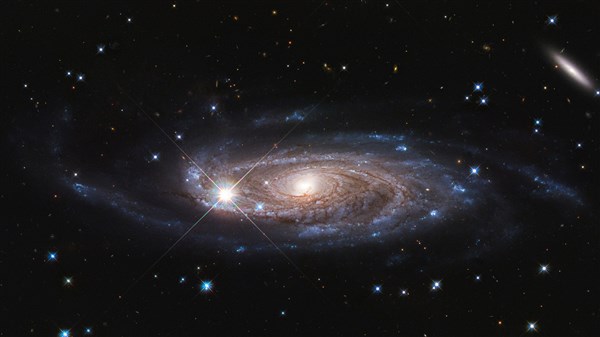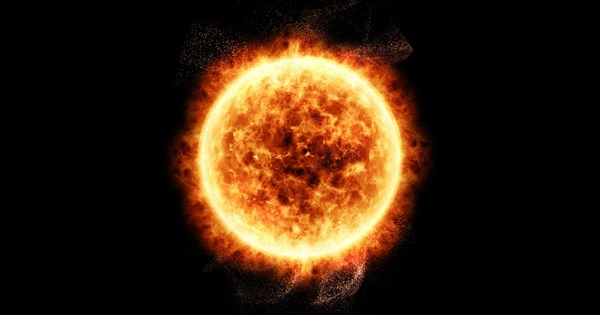
The universe has many things waiting for humanity to discover.
These are all physical phenomena in the universe but few people know about.
Status plasma
On Earth, matter is known to exist in three states: solid, liquid, or gas. But in spatial, 99.9% of matter is in a completely different form: Plasma. Composed of free ions and electrons, plasma is the fourth state of matter in which substances are strongly ionized.
Although rarely exposed to plasma, humans see this state all the time. All stars in the sky, including the Sun, are made of plasma. It sometimes appears on Earth as lightning.
Compared to gaseous matter, when particles move freely, chaotically, plasma is structured like a group. It both conducts electricity and is influenced by an electromagnetic field. These fields can control the movement of charged particles in the plasma and create wavelengths that propel these particles to extremely high speeds.

Plasma is a common substance found in the universe.
Temperature extremes
From Siberia to the Sahara, temperatures on Earth are incredibly diverse. There are places where temperatures up to 60 degrees Celsius are recorded, but there are also places where temperatures drop to -89 degrees Celsius. But the types of weather that are considered extreme on Earth are only in the average range in space.
On planets that do not have atmospheres that help insulate heat, the temperature fluctuations between day and night are very large. For example, Mercury has a temperature of about 500 degrees Celsius during the day and cold at night down to -171 degrees Celsius.
Even the sun’s heat-receiving surfaces differ by about 60 degrees Celsius from those hidden from the Sun. Similarly, NASA’s Parker Solar Probe experienced a difference of more than 2,000 degrees between the near and hidden sides of the Sun.
As a result, satellites and scientific instruments launched into space are carefully designed to withstand these extreme conditions. At the same time, the engineers making the spacesuit must calculate the tolerance for temperatures ranging from -157 degrees Celsius to 121 degrees Celsius.
The suit is white to reflect light when in the sun and has a heater inside to keep warm when the temperature in the space drops. The design also provides the right oxygen and pressure, while resisting damage from microparticles and UV radiation from the Sun.
Cosmic “alchemy”
According to the principle of operation, the Sun is capable of converting hydrogen gas into helium in its core. The process of bonding atoms together under extreme pressure and temperature helps create new elements, called fusion.
When the universe was born, hydrogen and helium were the most common. Besides, there are some other light elements. Since then, the formation of stars and supernovas has provided the universe with more than 80 different elements. Some of these elements make up life.
Along with the creation of new elements, there is fission, a reversible nuclear reaction that splits heavy elements into lighter ones. Today, this reaction is used in nuclear power plants. The energy released during fission can create a cataclysmic explosion.
The sun fluctuates
The Earth revolves around the Sun and the Sun is an active star. The Sun’s light can sustain life, but the Sun’s fluctuations can create large flows of energy and radiation that jeopardize the formation of life. Thanks to the protective shield of the magnetic field and the atmosphere, the Earth can escape the effects of the Sun’s fluctuations and prosper.
Outside the lower atmosphere, the magnetic fields around the Earth connect, disconnect, and release energy that helps protect the Earth. This energy is converted into kinetic, thermal, and particle acceleration, called magnetic reconnection. Sometimes the magnetic reconnection is disturbed so it hits the Earth’s atmosphere and causes the aurora.
Over the past time, NASA has built many missions to better understand the fluctuations of the Sun, its impact on Earth and how to avoid it. For example, the Magnetospheric Multiscal mission helps scientists determine the origin and impact of solar fluctuations and the effectiveness of the magnetic reconnection reaction of the magnetic field.
Energy transmission
On Earth, energy can be transferred from one object to another through force or heat transfer. But out space, particles can transfer energy without contact. This strange transfer takes place in invisible structures called tremors.
Energy in space is transmitted through plasma waves, electric and magnetic fields. Imagine particles like a flock of birds flying together. If a gust of wind rises in the direction the birds are flying, they will fly faster even though nothing seems to be pushing them forward.
Particles behave the same way when they suddenly encounter a magnetic field. Magnetic fields can essentially give them a forward thrust. In rare cases, Earth can have similar phenomena. For example, when bullets and aircraft move faster than the speed of sound.
at Blogtuan.info – Source: Soha.vn – Read the original article here



